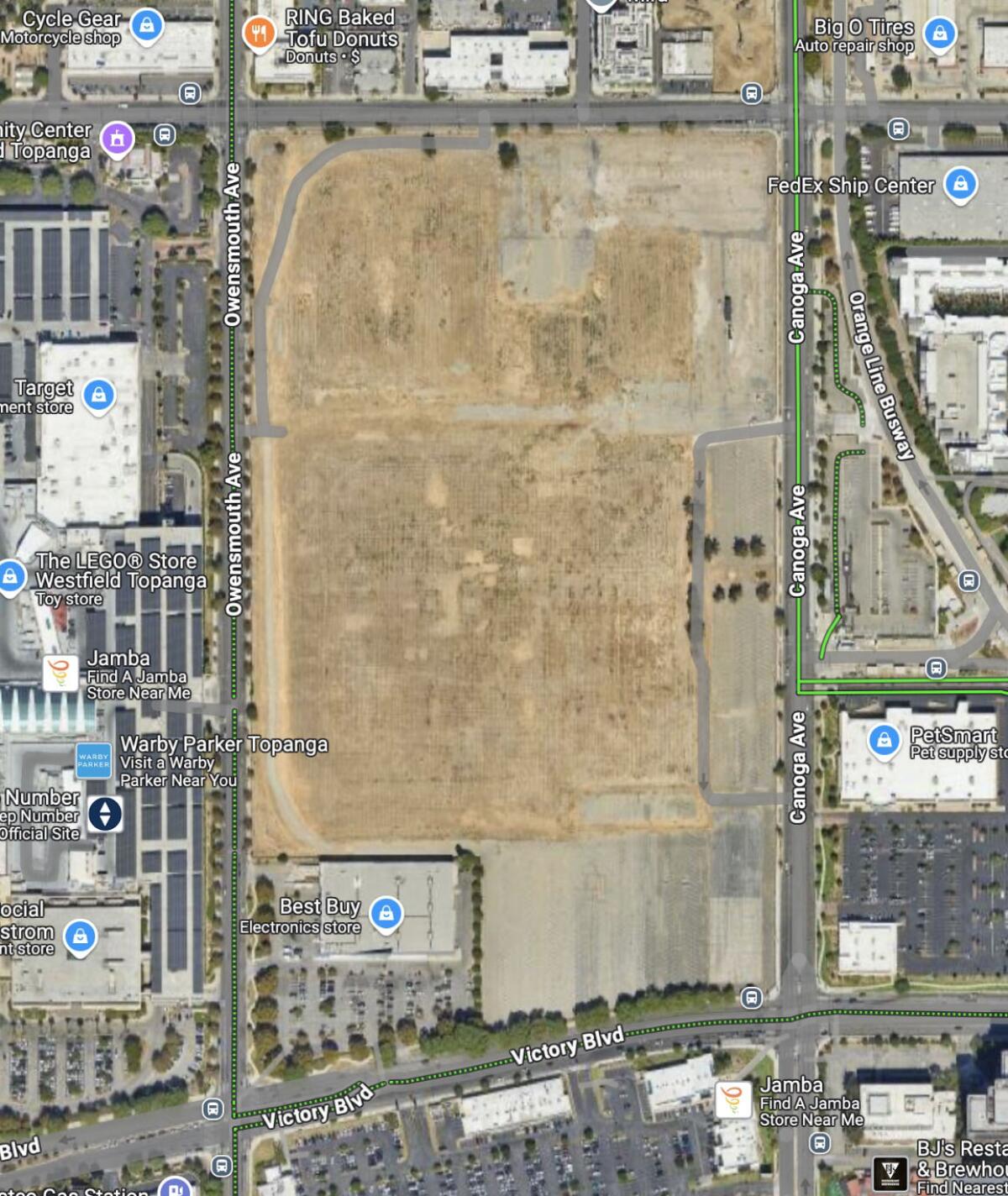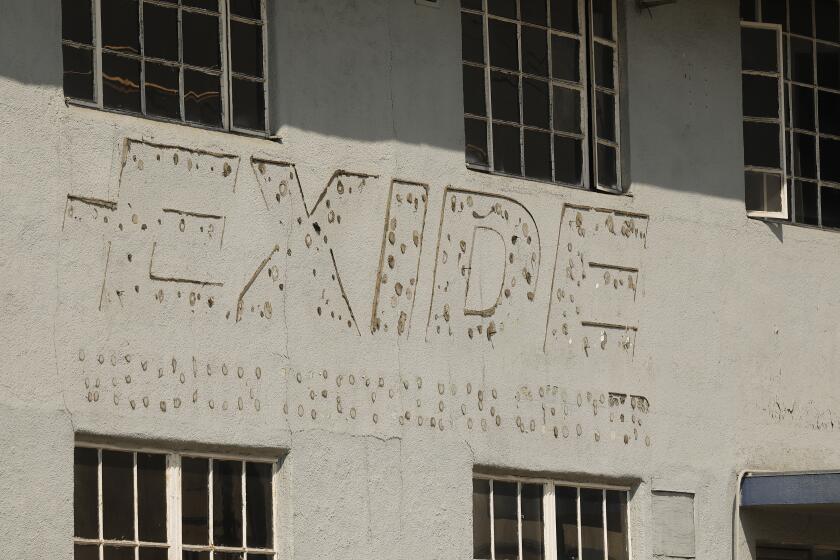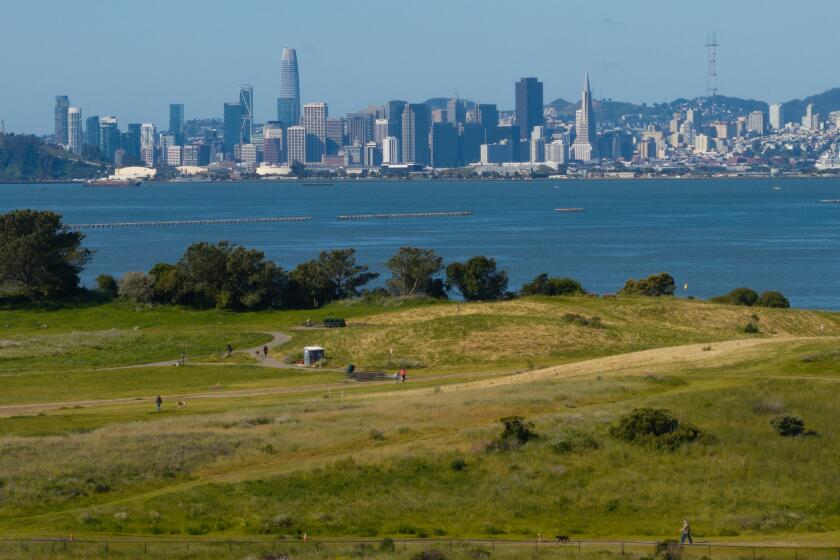Toxic chemicals found in soil and groundwater near former Rocketdyne site in Canoga Park

- Share via
A former rocket testing and development site in Canoga Park is under increased scrutiny after recent tests showed high levels of two toxic chemicals in surrounding homes and businesses.
The report, delivered on behalf of RTX Corp. to the California State Water Resources Control Board in June, detailed soil vapor and groundwater inspections at seven locations near the now vacant lot that was once home to the Rocketdyne testing and development site. It is adjacent to the Westfield Topanga mall.
At each of the seven locations, the tests recorded levels of toxic cleaning solvents that were above environmental screening levels that could pose a long-term threat to human health and the environment.
The report suggests further testing at residential and commercial locations north and east of the former Rocketdyne site, as groundwater flows tend to carry the toxic chemicals in that direction.
Several neighbors whose apartment building was screened spoke to The Times on condition of anonymity and said they had not been notified of the test results and were unaware that the testing had taken place at all.
One resident of a building north of the site where elevated levels were detected said he had not been notified. He has noticed security at the vacant lot, but if anything has changed recently, he said it would be “hard for me to notice it.”
EPA report concludes that the Vernon Exide site meets the criteria to be a Superfund site — not for lead, which has been the subject of cleanup efforts for years, but due to a toxic chemical in groundwater.
Another resident of the building said she was unaware of any testing, and requested further information. It was unclear whether RTX or the state water board planned to notify residents.
RTX, formerly known as Raytheon Technologies Corp., did not respond to requests for comment.
The state water board confirmed that the agency is reviewing the findings from RTX and consulting with toxicologists from the state Environmental Protection Agency’s Office of Environmental Health Hazard Assessment.
The water board said in written responses that it had notified some 7,000 residents and interested parties near the site, “including residences and businesses within a 500-foot radius of the property boundary.”
The 56-acre Rocketdyne site opened in 1955 and produced thousands of rocket engines. Engines produced at the site helped put the first man on the moon in 1969 and powered NASA space shuttles. Boeing acquired the company in 1996.
At the peak of the U.S. space race with Russia, the Canoga Park plant employed 22,000 people. By 2010, it was beginning to shut down, leaving behind the remnants of its industrial processes, including chemicals known as TCE and PCE.
Trichloroethylene, or TCE, is a colorless liquid that has been used to remove gunk from jet engines, strip paint and remove stains from shirts dropped off at the dry cleaners. Decades of widespread use in the U.S. have left thousands of sites contaminated with TCE, and a recent paper suggests a connection between the chemical and Parkinson’s disease.
Perchloroethylene, or PCE, is a cleaning solvent that has been linked to several types of cancer. California banned the use of PCE at dry cleaners in 2023, after decades of use as a dirt- and stain-removing agent.
After revelations that radioactive waste may be buried under two Bay Area parks, the cities of Albany and Berkeley submitted testing plans. Albany’s was approved; Berkeley’s was deemed insufficient.
In all, the report conducted for RTX by Haley & Aldrich Inc. included 66 soil vapor and 18 groundwater samples between October 2023 and May 2024.
“The presence of a chemical at concentrations exceeding an [environmental screening level] does not necessarily indicate adverse effects on human health or the environment,” the report stated, “but rather that additional evaluation is warranted.”
Another notorious site associated with the Rocketdyne name in the nearby Ventura County hills has also worried residents. The Santa Susana Field Laboratory, one of the state’s most toxic sites, is the subject of a documentary film by a mother who believes exposure to the toxicity caused her child and neighbors’ children to develop cancer.
The Santa Susana cleanup has been controversial and subject to significant delays. The smaller Rocketdyne site in Canoga Park has received less attention.
Additionally, the state water board has notified some 4,000 residents near a former Litton Industries site northeast of the Rocketdyne site and also in Canoga Park about exposure to toxic chemicals, said Jane Williams, executive director of California Communities Against Toxics.
She believes that sewer lines may be connecting the two toxic sites, causing them to become comingled.
“We’re pretty sure that these two sites are going to come together,” she said, characterizing vapor intrusion sites like the Litton Industries and Rocketdyne sites as “very alarming.”
“The fact that people near these sites are not being notified,” Williams said, “is an issue of grave concern to us.”
More to Read
Sign up for Essential California
The most important California stories and recommendations in your inbox every morning.
You may occasionally receive promotional content from the Los Angeles Times.













